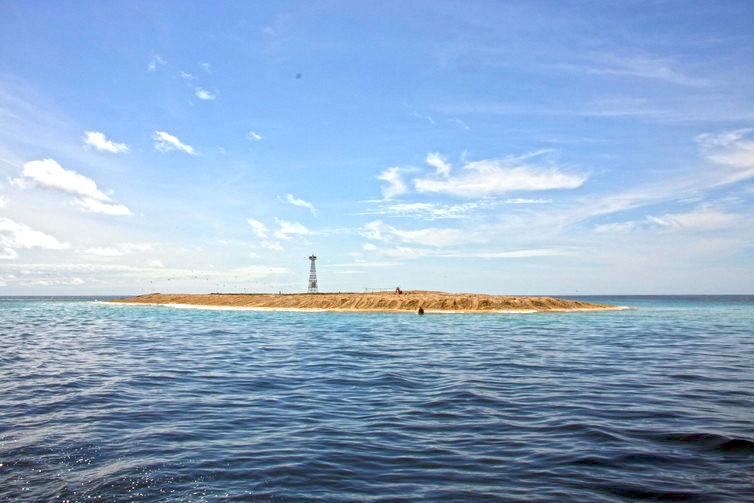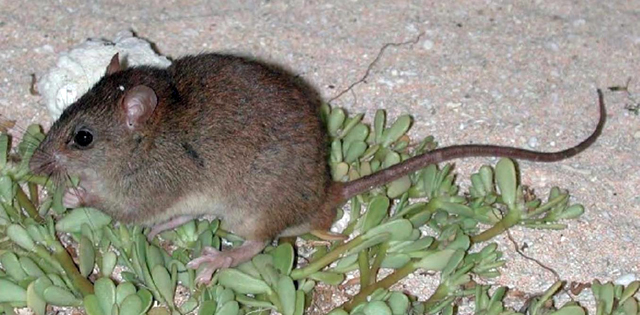Climate change has sealed the fate of a unique Barrier Reef rodent.

The tiny islet of Bramble Cay, in the NE Torres Strait. PHOTO Natalie Waller/The Conversation
Life in the wild is a rough, tough affair, a battle against the elements and each other. Nature leaves no room for sentiment.
The same is true for science, but in the life sciences it’s hard to keep sentiment at bay because we humans are part of the story, both as living organisms ourselves and as important agents of change. Inevitably, the study of species extinction carries a lot of human baggage.
We’ve worked out roughly how species evolve and interact, yet this knowledge remains fragmented and incomplete. Estimates of the number of species vary from 1.5 million at the low end (nearly all identified) to as high as 100 million (nearly all unidentified).
The International Union for the Conservation of Nature requires conclusive evidence before it records a species as extinct. It lists about 800 extinctions since about 1600 – less than 0.1 per cent of species identified over this time, or about two per year.
Extrapolating from their own field of expertise, most ecologists believe the present global extinction rate is much higher. Some put it as high as one or more species every hour.
Unlike the naturalist’s specimen, living things can’t be pinned down, and though we’re slowly getting a better handle on species extinction we’ll never know the full story.
But an extinction that was confirmed this month stands out from the crowd – a species that was confined to one of the Torres Strait Islands, the tiny but not insignificant Bramble Cay.
Not much bigger than a football oval, Bramble Cay marks the northern extremity of the Great Barrier Reef. At nine degrees of latitude south of the Equator and only 50 km off the Papuan coast, it’s also the northernmost bit of Australian dirt.
Seawater flooding on many islands in Torres Strait is a regular event these days because the past 20 years have seen waters rise by 6 mm a year, well above the global average of 3.2 mm. By 2100 they’re projected to be between half and one metre higher.
Excluding a 17 metre light tower, the cay’s highest point is just 3 metres above high tide. In an archipelago of low-lying islands, Bramble Cay is one of the most vulnerable.
A Queensland government report released early this month said that the island’s recent history had been marked by “anthropogenic climate change-induced impacts of sea-level rise” caused by “damaging storm surges and extreme high water levels”, more frequent and more intense than previously.
It was this, said the report, which sealed the fate of the Bramble Cay melomys, a rodent species that appears to have evolved to its present form on the island, having been found nowhere else. It was the only mammal species endemic to the Reef.

A Bramble Cay melomys. PHOTO Queensland Government
So Bramble Cay has given Australia the melancholy distinction of recording the first mammal extinction in the world known to have been caused by human-induced climate change.
There were several hundred Bramble Cay melomys back in the 1970s. A 2004 survey found just a dozen. Two University of Queensland surveys in 2014, the last one involving multiple camera traps and intensive daytime searches, failed to find a single individual.
A fisherman who often visits the island says he last saw a melomys – just one – in late 2009. This solitary animal may have been the endling of the Bramble Cay melomys, the last of its line.
This extinction leaves just a tiny gap in the list of over 2200 rodent species – about 40 per cent of all mammal species – in an order of animals represented on every continent except Antarctica. There’s no point in being sentimental over it.
No point, but I can’t suppress a feeling of loss and a twinge of regret that after surviving for centuries on one tiny island, this little animal has now fallen victim to humanity’s excesses.
We could mark its demise with something solid – an engraved headstone on the island, say – but its time would be limited. Like the departed melomys, Bramble Cay itself is headed for a watery grave.
But we shouldn’t forget, so here’s the record for posterity: Bramble Cay mosaic-tailed rat, Melomys rubicola; first described by Oldfield Thomas 1924; extinct 2016. R.I.P.
